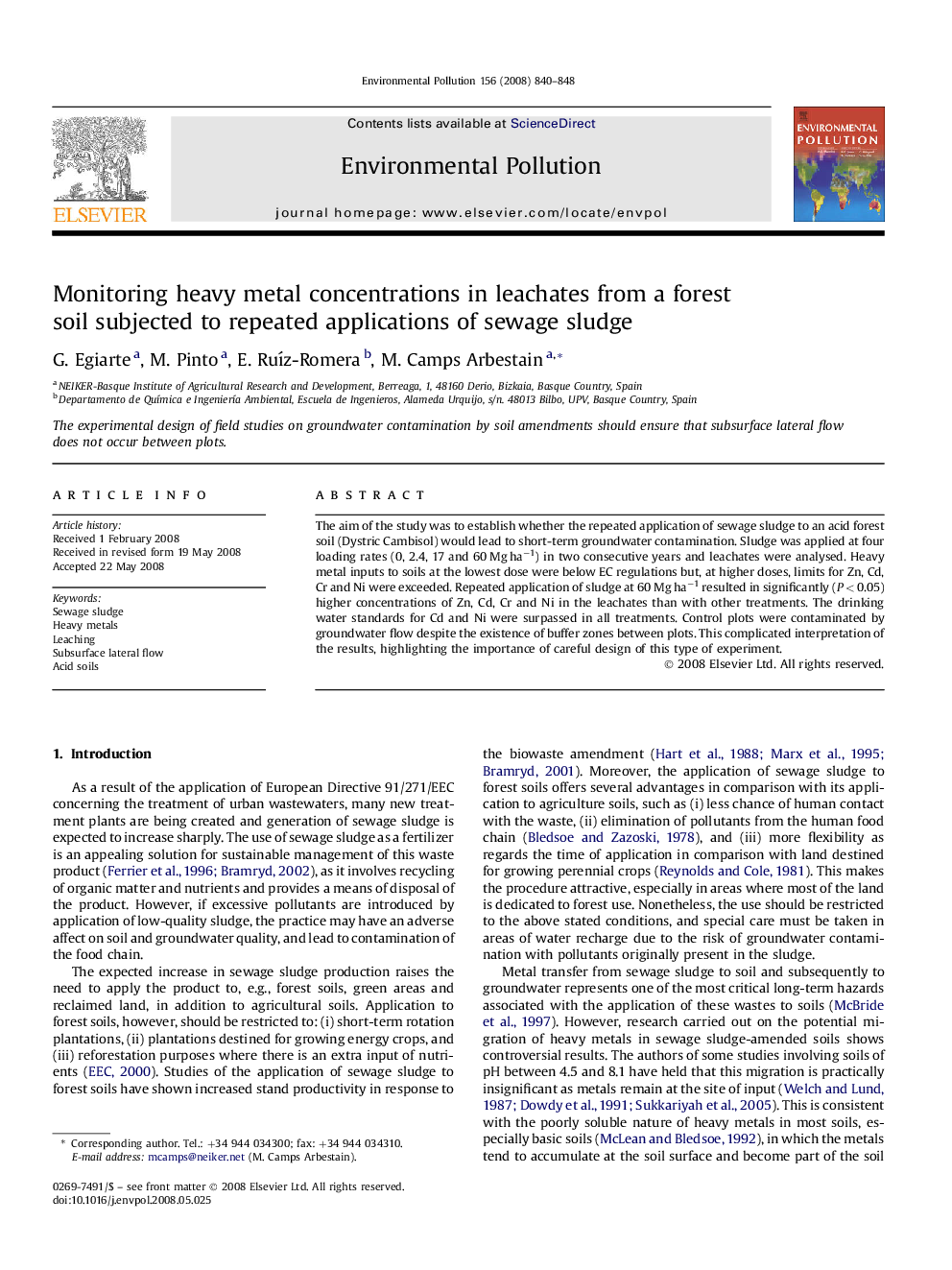| Article ID | Journal | Published Year | Pages | File Type |
|---|---|---|---|---|
| 4426219 | Environmental Pollution | 2008 | 9 Pages |
The aim of the study was to establish whether the repeated application of sewage sludge to an acid forest soil (Dystric Cambisol) would lead to short-term groundwater contamination. Sludge was applied at four loading rates (0, 2.4, 17 and 60 Mg ha−1) in two consecutive years and leachates were analysed. Heavy metal inputs to soils at the lowest dose were below EC regulations but, at higher doses, limits for Zn, Cd, Cr and Ni were exceeded. Repeated application of sludge at 60 Mg ha−1 resulted in significantly (P < 0.05) higher concentrations of Zn, Cd, Cr and Ni in the leachates than with other treatments. The drinking water standards for Cd and Ni were surpassed in all treatments. Control plots were contaminated by groundwater flow despite the existence of buffer zones between plots. This complicated interpretation of the results, highlighting the importance of careful design of this type of experiment.
